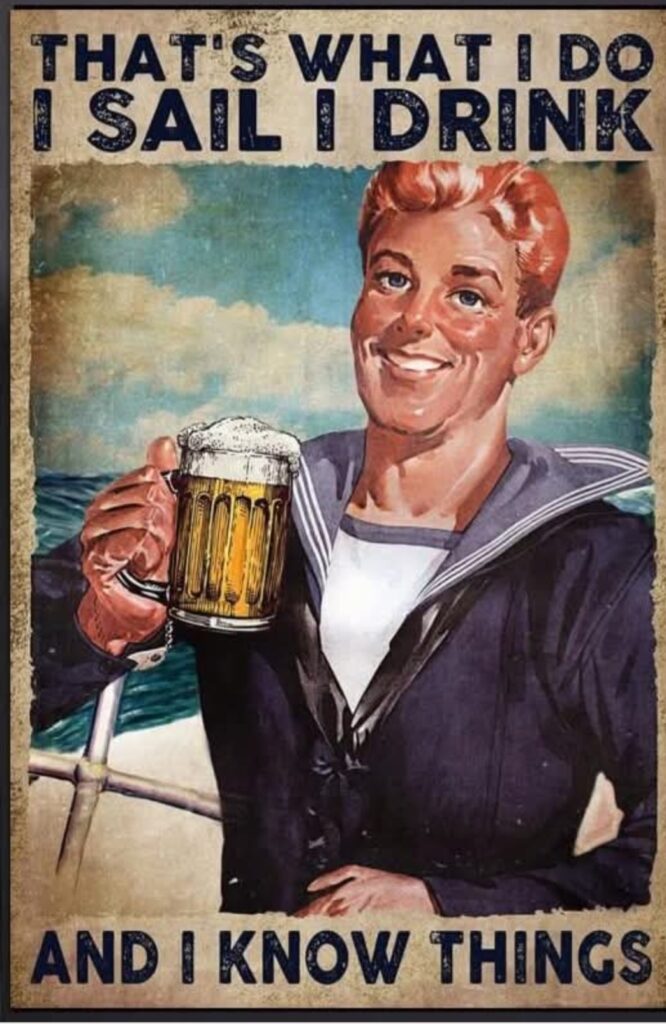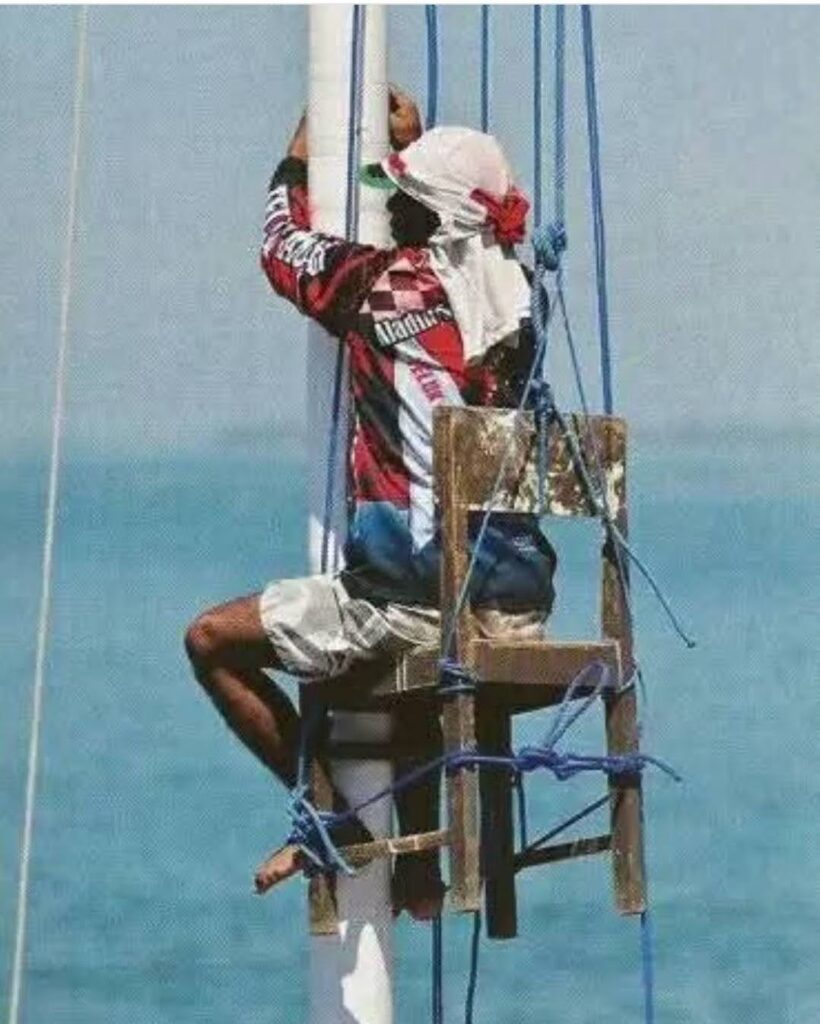Eye of the Wind – Epilogue
Our friend Bill, after seeing our first pictures of the Eye of the Wind (in Soufriere Bay) chose the term “magnificent”. On reflection, magnificent turned out be most apt but perhaps not in the way one might have expected. The sailing was indeed, magnificent.

The Eye of the Wind is a 114 year old steel vessel. While meticulously maintained, she still shows her age – including a “patina” of rust in spots. Also, as Captain Moritz pointed out, the pictures you see with full sails are only for brochures. Sails are optimized for the wind conditions. With steady 20 to 25 knot winds (at times gusting up to 38!) we were able to sail along at 6 -7 Knots with about 50 to 60% of the sails deployed.
I was fortunate enough to have been given the helm for an hour or so at a time on three separate legs of the journey. Sailing close-hauled with a square rigger is much trickier than a sloop, particularly if winds are gusty. A “fore and aft”/Bermuda rigged vessel like a sloop tends to be more forgiving. If the jib starts to luff it’s usually fairly easy to recover by falling off the wind. With a square rigger sailing “too close” can result in a series of escalating problems and recovery calls for immediate action. After some early mistakes I started to get the hang of it and backed a few degrees off close hauled*. As a result I was able to work my way down from the Captain’s keel hauling list to a “probable” flogging.
I also had a personalized tour of Guillaume’s steamy, hot engine room (curiously enough I was only the second person ever to request such a visit). ………..”err…….watch your head……Oops! too late…………..
Just kidding, Guillaume was the consummate professional and guided me through without incident. The Eye of the Wind is considerably overpowered with a 700 hp 6 cylinder Caterpillar diesel for an auxiliary engine. The story goes that a previous owner of the vessel was late for a party due to lack of wind and not enough diesel power. As a result he replaced the engine with a much more powerful one. On those rare occasions we did use diesel power she moved along at a surprisingly fast clip. The engine room also houses two diesel powered electrical generators and a reverse osmosis system to convert seawater into fresh water for domestic use.


No, I did not take the opportunity to climb the rather precarious ratlines to the top of the mast. Maybe if I’d had a bosun’s chair like this one (and a cuppa tea an’ a bikkie) I might have.
We experienced rain squalls, slippery decks and very hard work at times. Still magnificent? Absolutely, we wouldn’t have missed it for the world!
_______________________________________________________________________________________________________________
* a square rigger does not sail or manouver as efficiently into the wind as a Bermuda rig vessel – about 60 degrees off the wind vs about 45 degrees)
2 Comments
Tim
I’m fascinated by an actual Chair that seems to be lashed to the mast. The Bosun’s chair was slung between vessels or from alarger one to a small one, often with a awkward load, injured person, inebriated person, or a landlubber, all of which increased the security of the person during the transfer. But a chair rigged on pulleys up the mast?
Great summary. One day I would like to ask about the relative advantages/disadvantages beween tacking and wearing in a square-rigged vessel (or tacking and jibing in a fore-and aft rigged vessel. There would seem to be a lot of adjustment to spars and yards needed at each stage, so with one person at the helm, how many others are pulling on lines?
Jennifer Smith
(from Glen) Great questions Tim. A modern day bosun’s chair (boatswain’s chair in UK) typically is a sling with a seat board designed for doing work aloft or on the exterior of a hull. For doing work on a mast it’s typically suspended from the halyard.
Wearing ship and jibing (US) or gybing (UK) describe the same maneuver for square riggers and fore and aft rigs respectively.
I gather square riggers are poorly suited for tacking and can totally stop and flounder when the wind is head on. For this reason wearing ship is preferred over tacking by many captains.
(from Jenny) Because you’d need to have people hauling on both sides of the ship, and lines of vision were often blocked by infrastructure – Alex and Amy would stand both sides of the bow – having clear sight of every line … and would call out, for example “Ready on the Main Starboard brace” Answer would be “Ready”, and command given to haul away. One yard at a time … repeated on the other side … then mizzen mast. Once yards were adjusted sails would be hoisted (three ropes/three people per sail) – main jib then Gallant, top sail, then main. You’d move down the ship, hauling lines, securing (using the flat of your palm to hold it in place while looping it top and bottom around the pins three times). Adjustments/tightening would need ‘sweating’ … 2 people – one to first push the rope away, then haul down and tighten/ another to ‘tail’ the rope tight with each increment. So, for a well trained, fit crew you could probably sail her with 8 or 9 people.